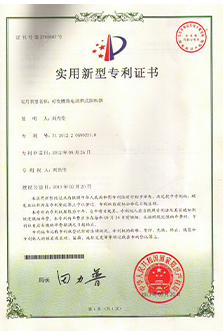 Afrikaans
Afrikaans  Albanian
Albanian  Amharic
Amharic  Arabic
Arabic  Armenian
Armenian  Azerbaijani
Azerbaijani  Basque
Basque  Belarusian
Belarusian  Bengali
Bengali  Bosnian
Bosnian  Bulgarian
Bulgarian  Catalan
Catalan  Cebuano
Cebuano  Corsican
Corsican  Croatian
Croatian  Czech
Czech  Danish
Danish  Dutch
Dutch  English
English  Esperanto
Esperanto  Estonian
Estonian  Finnish
Finnish  French
French  Frisian
Frisian  Galician
Galician  Georgian
Georgian  German
German  Greek
Greek  Gujarati
Gujarati  Haitian Creole
Haitian Creole  hausa
hausa  hawaiian
hawaiian  Hebrew
Hebrew  Hindi
Hindi  Miao
Miao  Hungarian
Hungarian  Icelandic
Icelandic  igbo
igbo  Indonesian
Indonesian  irish
irish  Italian
Italian  Japanese
Japanese  Javanese
Javanese  Kannada
Kannada  kazakh
kazakh  Khmer
Khmer  Rwandese
Rwandese  Korean
Korean  Kurdish
Kurdish  Kyrgyz
Kyrgyz  Lao
Lao  Latin
Latin  Latvian
Latvian  Lithuanian
Lithuanian  Luxembourgish
Luxembourgish  Macedonian
Macedonian  Malgashi
Malgashi  Malay
Malay  Malayalam
Malayalam  Maltese
Maltese  Maori
Maori  Marathi
Marathi  Mongolian
Mongolian  Myanmar
Myanmar  Nepali
Nepali  Norwegian
Norwegian  Norwegian
Norwegian  Occitan
Occitan  Pashto
Pashto  Persian
Persian  Polish
Polish  Portuguese
Portuguese  Punjabi
Punjabi  Romanian
Romanian  Russian
Russian  Samoan
Samoan  Scottish Gaelic
Scottish Gaelic  Serbian
Serbian  Sesotho
Sesotho  Shona
Shona  Sindhi
Sindhi  Sinhala
Sinhala  Slovak
Slovak  Slovenian
Slovenian  Somali
Somali  Spanish
Spanish  Sundanese
Sundanese  Swahili
Swahili  Swedish
Swedish  Tagalog
Tagalog  Tajik
Tajik  Tamil
Tamil  Tatar
Tatar  Telugu
Telugu  Thai
Thai  Turkish
Turkish  Turkmen
Turkmen  Ukrainian
Ukrainian  Urdu
Urdu  Uighur
Uighur  Uzbek
Uzbek  Vietnamese
Vietnamese  Welsh
Welsh  Bantu
Bantu  Yiddish
Yiddish  Yoruba
Yoruba  Zulu
Zulu conveyor snub roller
Understanding the Conveyor Snub Roller An Essential Component in Material Handling
In the realm of material handling, conveyor systems play a pivotal role in enhancing efficiency and productivity across various industries
. Among the myriad of components that make up a conveyor system, the conveyor snub roller stands out as a crucial element, often overlooked yet vital for optimal operational performance.A conveyor snub roller is typically located at a strategic point along the conveyor belt system. Its primary function is to redirect or guide the belt, ensuring it maintains proper tension and alignment. By changing the direction of the belt, snub rollers help facilitate smoother transitions and reduce wear and tear on the conveyor components. This operational significance cannot be overstated, as misaligned belts can lead to inefficient material transfer, increased downtime, and costly repairs.
These rollers work by providing additional contact points for the conveyor belt, which increases friction and helps maintain the necessary tension. This is particularly important in high-load applications where the belt must exert substantial strength to transport heavy materials. The correct tension not only protects the integrity of the belt but also enhances the overall life cycle of the conveyor system.
conveyor snub roller

Moreover, the placement of the snub roller is crucial in determining the effectiveness of the conveyor system. Properly positioned snub rollers can also aid in absorbing shock loads and vibrations that occur during the transportation of materials, further contributing to the system's longevity.
Different types of snub rollers exist in the market, ranging from adjustable models that cater to variable tension requirements to those specifically designed for specialized applications. Selecting the right snub roller depends on several factors, including the type of materials being handled, the conveyor design, and the operational environment. It is essential for engineers and designers to consider these factors to ensure optimal performance.
Maintenance of snub rollers is another vital aspect that can affect the overall functionality of the conveyor system. Regular inspections for wear and tear, lubrication of moving parts, and prompt replacement of damaged components are necessary to ensure that the snub rollers operate effectively.
In conclusion, the conveyor snub roller serves a fundamental role in the efficiency and reliability of conveyor systems. Its ability to maintain tension, guide the belt, and reduce wear makes it an indispensable component in material handling operations. By understanding the significance of the snub roller and committing to proper maintenance, businesses can enhance their conveyor system's performance, ensuring seamless operation and reduced operational costs. As industries continue to evolve, the importance of such components will only become more pronounced in the quest for greater efficiency and productivity.
-
Trusted Conveyor Solutions from Leading Conveyor Idler Roller ManufacturersNewsJun.27,2025
-
Reliable Return Idler Solutions for Efficient Belt Conveyor SystemsNewsJun.27,2025
-
Precision Conveyor Accessories for Streamlined Material HandlingNewsJun.27,2025
-
High-Quality Belt Conveyor Idler Solutions for Efficient Material HandlingNewsJun.27,2025
-
High-Performance Belt Conveyor Pulleys for Reliable Material HandlingNewsJun.27,2025
-
Enhancing Material Handling EfficiencyNewsJun.27,2025





























